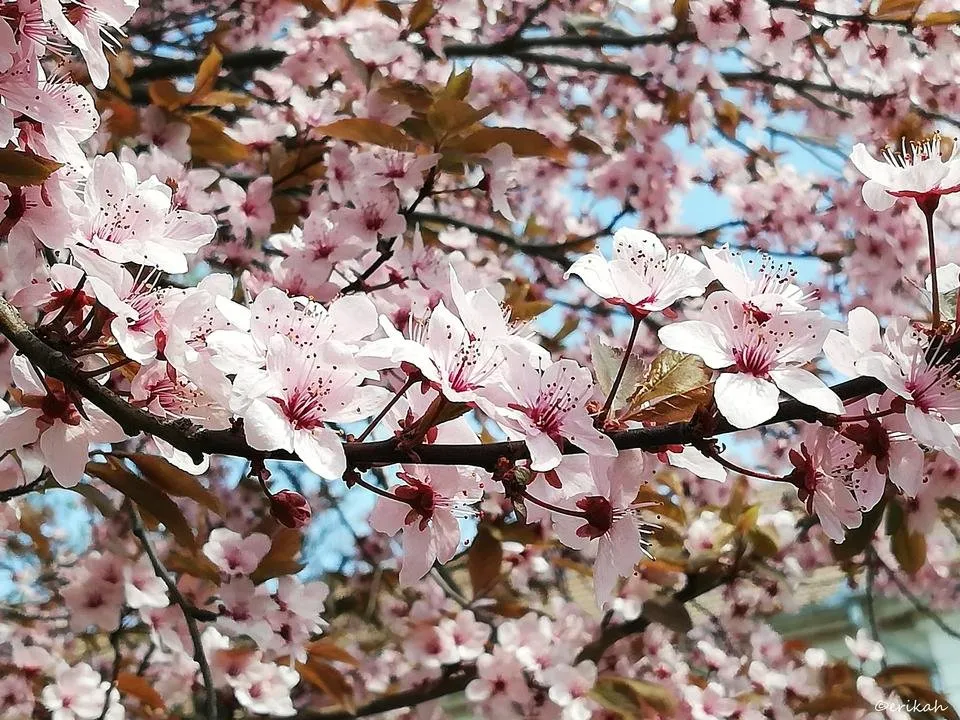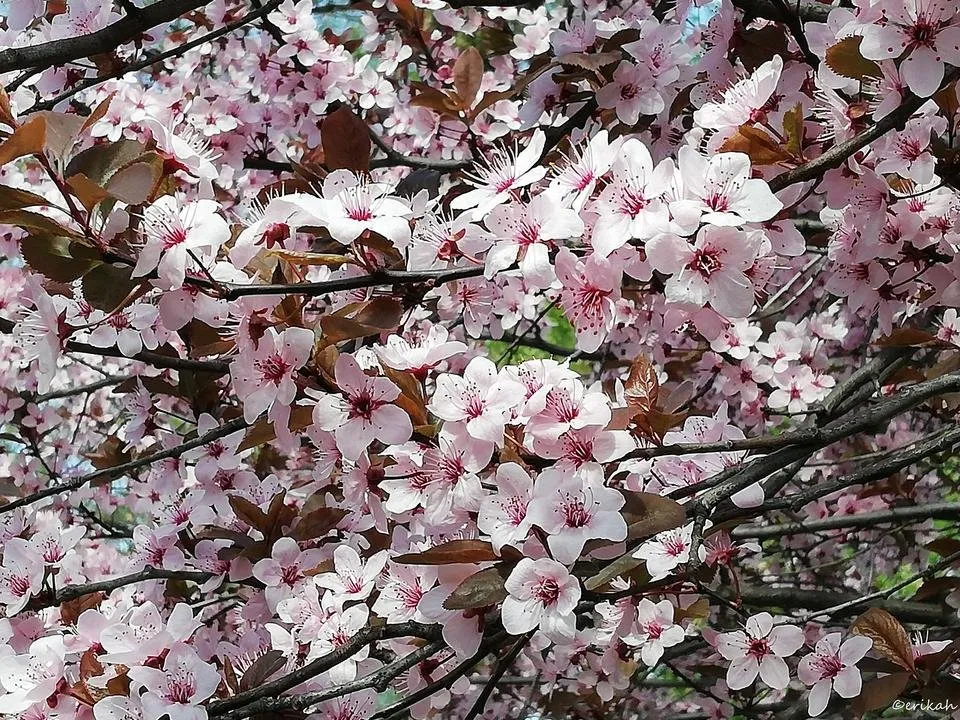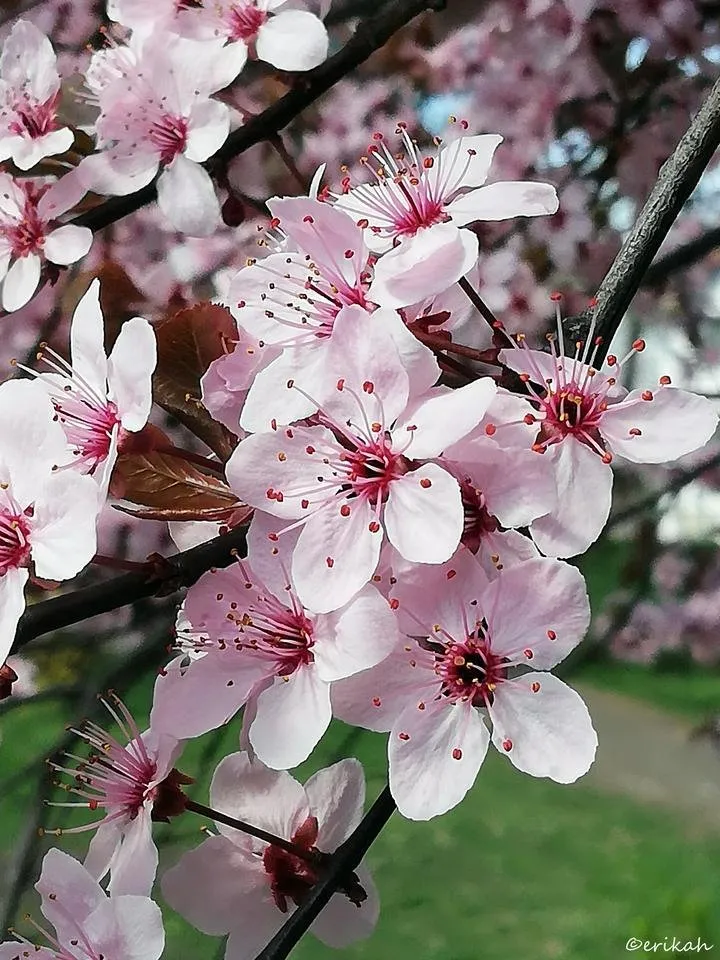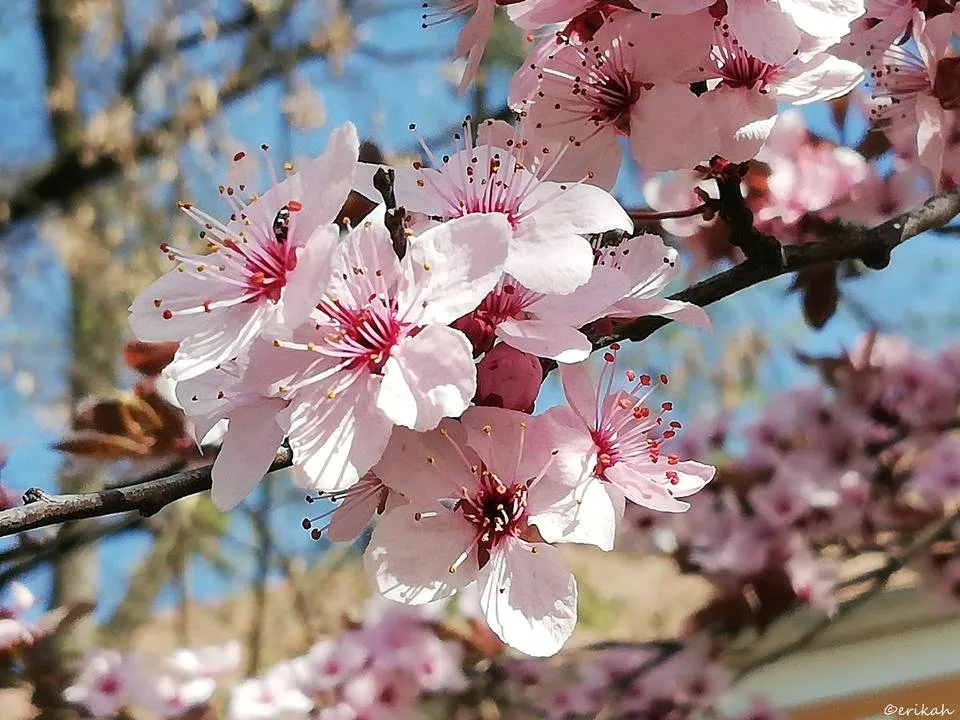Today is a special day as I can show you the wild cherry blossom I've been waiting for to bloom. For me spring starts with these cherry blossoms as these are the most spectacular flowers of the season. The other day I've managed to take a bunch of photos, half of which were blurry again due to the wind, and had to be deleted.

This is pink and the its leaves are dark claret, almost brown. Interesting that this one is blooming a week later than the white one. So here it is, in its full beauty, with these little flowers made of five petals each. Just like the white one, it has a very pleasant scent.

Unfortunately it won't last more than one week or two, then the petals start to fall and the whole street is full of white and pink cherry petals. It would be nice to enjoy these beautiful cherry blossoms for a little bit longer but unfortunately that's not possible. Mother nature had other plans when designed the schedule for these trees.

In Japan, cherry blossoms symbolize clouds due to their nature of blooming en masse, besides being an enduring metaphor for the ephemeral nature of life, an aspect of Japanese cultural tradition that is often associated with Buddhist influence, and which is embodied in the concept of mono no aware. source
I know there's a cherry blossom festival in China and I was hoping to see some photos here since there's a Chinese community with a pretty decent number of users but no luck so far. Maybe next year.

Looks like there are a lot of things I don't know about cherry blossom but Steemit is making me learn. It turns out a lot of things are made out of cherry blossom.
Cherry blossoms and leaves are edible and both are used as food ingredients in Japan:
- The blossoms are pickled in salt and umezu (ume vinegar), and used for coaxing out flavor in wagashi, (a traditional Japanese confectionery) or anpan, (a Japanese sweet bun, most-commonly filled with red bean paste).
- Salt-pickled blossoms in hot water are called sakurayu, and drunk at festive events like weddings in place of green tea.
- The leaves, mostly from the Ōshima cherry because of the softness, are also pickled in salted water and used for sakuramochi.
Since the leaves contain coumarin, which is toxic in large doses, it is not recommended to eat them in great quantities. source
I don't intend to poison myself but I'd really love to taste the these.

After the flowering period is over, every flower is replaced by a cherry, or at least that's how it should be. Cherries then end up on the ground and tha's how nature's recycling works.

This is my contribution to #wednesdaywalk hosted by @tattoodjay and to #seasonchallenge hosted by @roxy-cat. Check out the latest edition of the SeasonChallenge here -> SeasonChallenge #26 - 🌱Spring🌱 || Highlights of the past week